One of the most frequent questions coming from people who do not work in agriculture or related knowledge fields, is the way in which crops are classified. This question does not have a unique answer, on the contrary, there are several ways for classifying crops according to multiple criteria. As any classification system, there is no one which gives us all the information which people require, therefore it is necessary to join several classification methods, but for that, it is necessary to have knowledge of each one.
Taxonomic classification is maybe the most known system, it is defined for all living organism in the planet. It is a hierarchical structure, which has Kingdom Plantae as highest level followed by the taxonomic categories Division, Class, Order, Family, Genus and Species. By using the last two categories it is possible to get the scientific name which has the big advantage that it is used worldwide for the people who work or study some field related to Biology. All these people will know that Zea mays is maize, or Oryza sativa is rice or Helianthus annuus is sunflower. This taxonomic classification, in spite of makes easy the communication without mistakes when people talk about a crop, was not made specifically for crops, therefore it groups them only taking into account the phylogenetic relatedness, ( i.e. maize, rice, sugarcane and sorghum belong to family Poaceae) but it does not make it according to practical reasons.
A common system for classifying crops is the used by Food and Agriculture Organization (F.A.O.) as the office of U.N. (United Nations) working with agriculture. Maybe for an easy statistic information exchange, several countries follow this classification to record the agricultural production. This is a classification with utilitarian criterion. It groups crops according to the agricultural product. An approach to this classification, taking as base FAO classification, is the following:
- Cereals: short-cycle crops belonging to family Poaceae. They are cultivated in large field extensions for getting and commercializing the grains which have high content of carbohydrates. Normally they are used with agroindustrial purposes. Examples: maize, rice, sorghum, wheat.
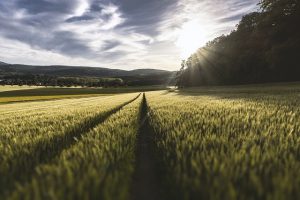
- Pulses: short-cycle crops belonging to family Fabaceae. They are cultivated in large or small field extensions for getting and commercializing the grains which have high protein content. Normally they are used for direct consumption (without industrial processes). Examples: bean, faba bean, pigeon pea, chickpeas, cowpeas, lentil.
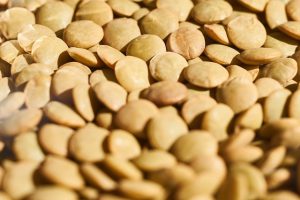
- Oil crops: most of them are short-cycle crops, belonging to several taxonomic families. They are cultivated in large field extensions for getting grains as source of oil which has to be extracted in industrial processes. Examples: Short-cycle: soybean, sesame, sunflower, canola. Long-cycle: oil palm.
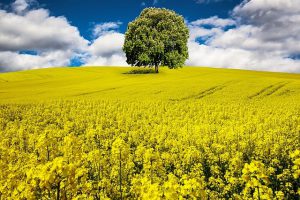
- Vegetables: most of them are short-cycle crops, belonging to several taxonomic families. They are cultivated in small field extensions or in greenhouses for getting plant organs such as roots, stems, leaves, flowers and fruits for fresh consumption. These organs have high content of vitamins, minerals, and fiber. Example: tomato, carrot, broccoli, pepper.
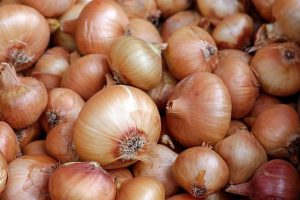
- Fruits: most of them are long-cycle crops, belonging to several taxonomic families. They are cultivated in large field extensions for getting fruits possessing high content of vitamins, minerals, and fiber; they are used mainly as fresh consumption. Some fruits are used for industrial transformation. Examples of fruits: orange, mango, avocado, passion fruit, banana, pineapple, apple, mandarine.

- Ornamental crops: these crops are not commercialized for getting food, but to get plant organs, mainly flowers (but also leaves and fruits), for ornament or decoration. There are short-cycle and also long-cycle ornamental crops. They are mainly cultivated in small field extensions or in greenhouses.
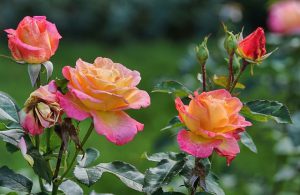
- Roots and tubers: most of them are short-cycle crops, belonging to several taxonomic families. They are cultivated in large field extensions, some of them, and other ones are cultivated in small field extensions. They are cultivated for getting roots and stems as source of carbohydrates, most of them have to be cooked for consumption, and they are commercialized without any industrial process. Examples: potato (potato tuber is a modified stem), cassava, yam.
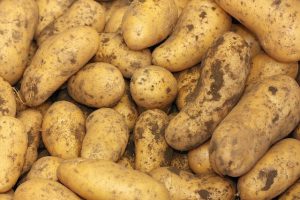
- Traditional tropical crops: they are coffee, cocoa, sugarcane and tobacco. These four crops do not have many things in common, it is a category which could be named “it does not know in which category they can be assigned”. Coffee and cocoa could be classified as Fruits.
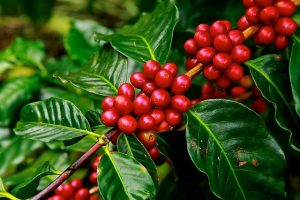
- Grasses: most of them are long cycle crops which are utilized for animal feeding, particularly for ruminants feeding. They can be offered to the animal directly from the field as fresh grass (pasture where the animal consume it directly) or they can act as cutting grasses which are dried to get hay, or they can be fermented to get silage. Hay and silage are offered to the animal in seasons where offer of the grass in field is difficult (i.e. in dry season in tropical countries, in winter in countries having four seasons).
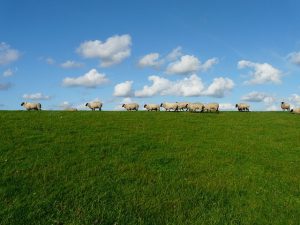
This utilitarian classification can be confusing, especially if it is tried to combine with taxonomic classification. For example, soybean belongs to Familie Poaceae, but according to the utilitarian classification it is an oil crop. Other example is potato, it could be a vegetable because has all the attributed to be considered as it, but normally it is classified in the category Roots and Tubers; carrot is a root therefore it could be classified in the category Roots and Tubers, however normally it is classified as vegetable.
Another crops classification criterion is according its cycle, which also uses the criterion of sowing or planting in a definitive place, or the use of a previous step before sowing or planting in a definitive place. When these criteria are used, crops may be classified in the following way:
- Short-cycle crops: they are crop with a life cycle no longer than one year. Most of these crops are harvested only once, because plant produces the fruit and after some weeks it dies. There are exceptions such as tomato and pepper which produce fruits many times during its life, but normally they will not live more than one year. Exceptions about life cycle length are the biannual crops such as carrot, which develops foliage for one year, and the following year becomes thick the root and dies.
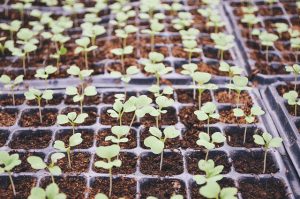 a. With transplanting: crops having two productive phases, the first one in a seedbed and the following in the definitive place for the plant. Seedbed is a phase in which seeds are put on a substrate for getting easy germination and first development phases of the plantlet, this first step is carried out many times on seed trays especially designed. When plantlets reach development enough, they are transplanted to the definitive place where plants will continue its development and where will be harvested. Examples: tomato, pepper, and vegetables in general.
a. With transplanting: crops having two productive phases, the first one in a seedbed and the following in the definitive place for the plant. Seedbed is a phase in which seeds are put on a substrate for getting easy germination and first development phases of the plantlet, this first step is carried out many times on seed trays especially designed. When plantlets reach development enough, they are transplanted to the definitive place where plants will continue its development and where will be harvested. Examples: tomato, pepper, and vegetables in general.
b. Without transplanting: crops in which seed are put in the place where it will develop itself, and where it will be harvested. Examples: maize, rice, sorghum, bean, soybean, sunflower, sesame.
2. Long-cycle crops (sometimes called plantation, but this term could result ambiguous): they are crops with a life cycle longer than two year. Harvest takes place several times during the plant life, on the same plants, normally once a year.
a.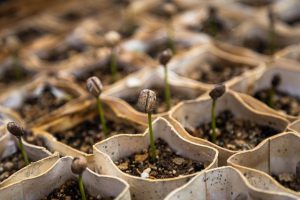 Without nursery: crops in which seed or propagule are put in the definitive site where they will be harvested, there is no transplanting. Examples: sugarcane, banana.
Without nursery: crops in which seed or propagule are put in the definitive site where they will be harvested, there is no transplanting. Examples: sugarcane, banana.
b. With nursery: crops in which seed are put on a friable substrate in a seedbed, to get easy germination and initial development of the plantlets. When plantlets germinate and become strong enough, they are transferred to individual bags or containers containing substrate. All the bags with the plantlets conform what is called nursery. When these plantlets reach a good development especially in roots, they are transplanted to the definitive place where they will live and harvested. Examples: coffee, cocoa, orange, and several fruits.
Comprehensive classification requires combining classification systems. To combine utilitarian classification with classification based on life cycle, results the following classification:
- Short-cycle crops
- With transplanting
- Vegetables: tomato, pepper, carrot, onion.
- Ornamental crops.
- Without transplanting
- Cereals: maize, rice, wheat, sorghum.
- Pulses: bean, chickpea, cowpea.
- Oil crops: soybean, sunflower, sesame.
- Ornamental crops
- With transplanting
- Long-cycle crops
- Without nursery
- Sugarcane
- Grasses
- Ornamental crops
- Without nursery
2. With nursery
- Fruits: orange, avocado, apple, pear, coffee, cocoa.
- Oil crops: oil palm.
- Ornamental crops
Ing. Agr. Hernán E. Laurentin T. (M. Sc., Ph. D.)




